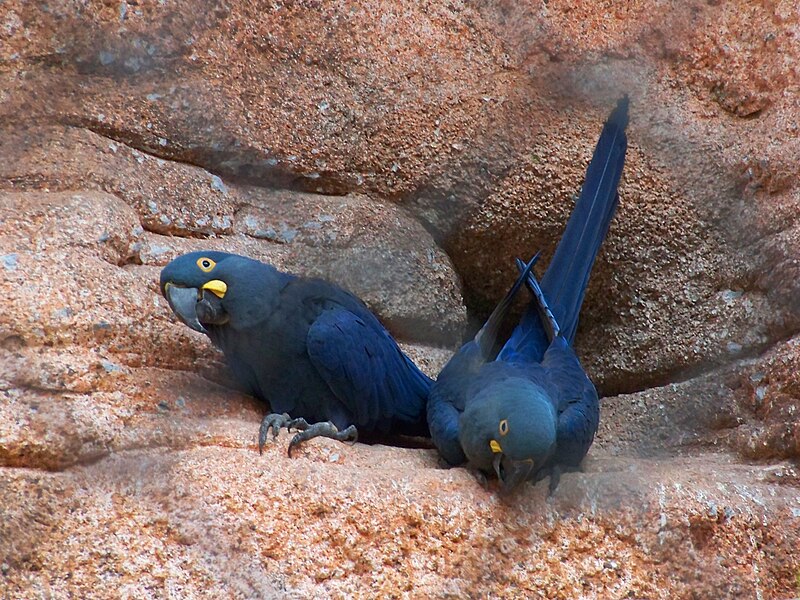 With a mere 500 or so individuals remaining in the wild, and very few in captivity, the Lear’s Macaw (Anodorhynchus leari) is one of the world’s scarcest parrots. Yet in its tiny home range of northeastern Bahia State, Brazil, this brilliant indigo-blue macaw poses a serious threat to subsistence corn farmers. Parrots International, in concert with Pro Aves Brazil, the Lymington Foundation and other groups, has devised a most unique initiative that benefits farmers and birds alike.
With a mere 500 or so individuals remaining in the wild, and very few in captivity, the Lear’s Macaw (Anodorhynchus leari) is one of the world’s scarcest parrots. Yet in its tiny home range of northeastern Bahia State, Brazil, this brilliant indigo-blue macaw poses a serious threat to subsistence corn farmers. Parrots International, in concert with Pro Aves Brazil, the Lymington Foundation and other groups, has devised a most unique initiative that benefits farmers and birds alike.
Endangered but Troublesome
It’s easy for folks living in relative financial security to criticize others for killing macaws, but for indigent subsistence farmers in Bahia State, Brazil, the Lear’s Macaw represents a serious threat to survival. The birds pillage the fields of people who, working without the benefit of mechanized equipment and fertilizer, raise barely enough corn to feed their families and livestock. Children are often kept home from school in order to chase the bird, but the enterprising macaws have learned to largely ignore their efforts.
Consequently, the farmers began killing the birds in numbers that approached those lost to poaching (their sandstone cliff nests are often easy to reach, please see photo) and habitat destruction.
Practical Conservation
Realizing that legal prohibitions on hunting were unworkable, a consortium of conservation groups decided to reimburse farmers for losses attributed to Lear’s Macaws. In the first year of the project, 10 tons of bagged corn was distributed.
Each farmer was given 110% of the corn taken by macaws…in effect being “rewarded” for the attacks with an additional 10% over his actual losses. This, along with the fact that the corn is already bagged and hence need not be harvested or processed, is beginning to foster a change in attitude – Lear’s Macaws are being seen as an asset that saves work and brings a reward in the form of extra corn!
 I’ve worked on conservation projects for creatures as diverse as owls, crocodiles and spiders, but all had a common thread – there must be a benefit to the people that live in the animals’ habitats or utilize the animals in some way. For better or worse, the world is too small and too complicated for there to be any other way.
I’ve worked on conservation projects for creatures as diverse as owls, crocodiles and spiders, but all had a common thread – there must be a benefit to the people that live in the animals’ habitats or utilize the animals in some way. For better or worse, the world is too small and too complicated for there to be any other way.
Further Reading
Sandstone cliffs of Bahia image referenced from wikipedia and originally posted by Maria Hsu
Lear’s Macaw Pair image referenced from wikipedia and originally posted by Marcos Pereira
 That Bird Blog – Bird Care and History for Pet Birds
That Bird Blog – Bird Care and History for Pet Birds




i am doing a project on the blue macaw i chose it as my endangered species i am in the sith grade i think you are doing a very genorus deed
Hello,
I’m sorry for the delay in responding…there was a glitch in the system. Thank you very much for taking the time to write in with your kind words. Good luck with your project…please let me know if you need any further information. Best regards, frank